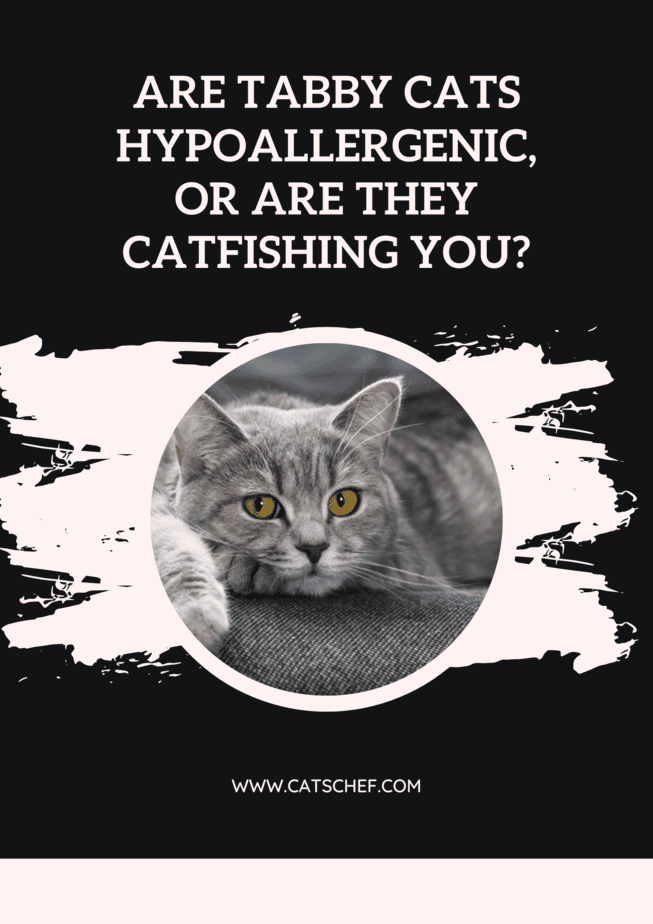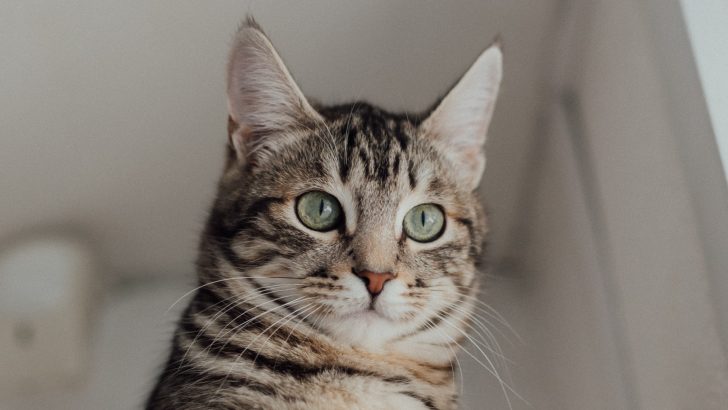Welcome to another post about our beautiful felines. Today, we’ll be talking about something very interesting. Are tabby cats hypoallergenic? What would you say?
First things first, in case you’re thinking of tabby cats as another breed, that’s not really the truth. The word tabby is actually used to describe a particular fur pattern that a cat has. So if you thought that your friend, who’s constantly bragging about his tabby being purebred, has a special cat – he probably doesn’t.
This coat pattern is the most popular in our domestic cats. Basically, any cat breed from Maine Coons, to Persians and Ragdoll or Siberian can have this distinctive fur coloration. If you’d ask Cat Fanciers’ Association, they’d tell you that only 25 breeds are allowed to be tabby cats.
Since they have strict rules about how tabby cats should look, they recognize five distinctive tabby patterns. Those are classic tabby, mackerel, ticked, patched, and spotted tabby. But what do they look like?
Short overview of tabby patterns
Classic tabbies have a pattern that’s usually compared to a marble cake, or a target. All darker lines go in spirals or circles and this is the most common of them all. The mackerel tabby pattern looks like a fishbone because the dark lines connect where your kitty’s spine is.
These felines also have darker rings all around their legs and tails. If you pay more attention to how the hair looks (agouti hair) in ticked tabbies, you’ll notice that they all have light and dark stripes all over. They may also have the M on their forehead and some spots on their legs.
The patched tabby pattern means that these cats have dark, and orange or brown patches on their bodies. Tortoiseshell or torties are other names for these beautiful fluffballs. Last but not least, the spotted tabby cat has round spots of different sizes and they look a lot like mackerel.
Now that we’ve covered the basics, it’s time to answer the question are tabby cats hypoallergenic finally, so let’s go!
Are tabby cats hypoallergenic?
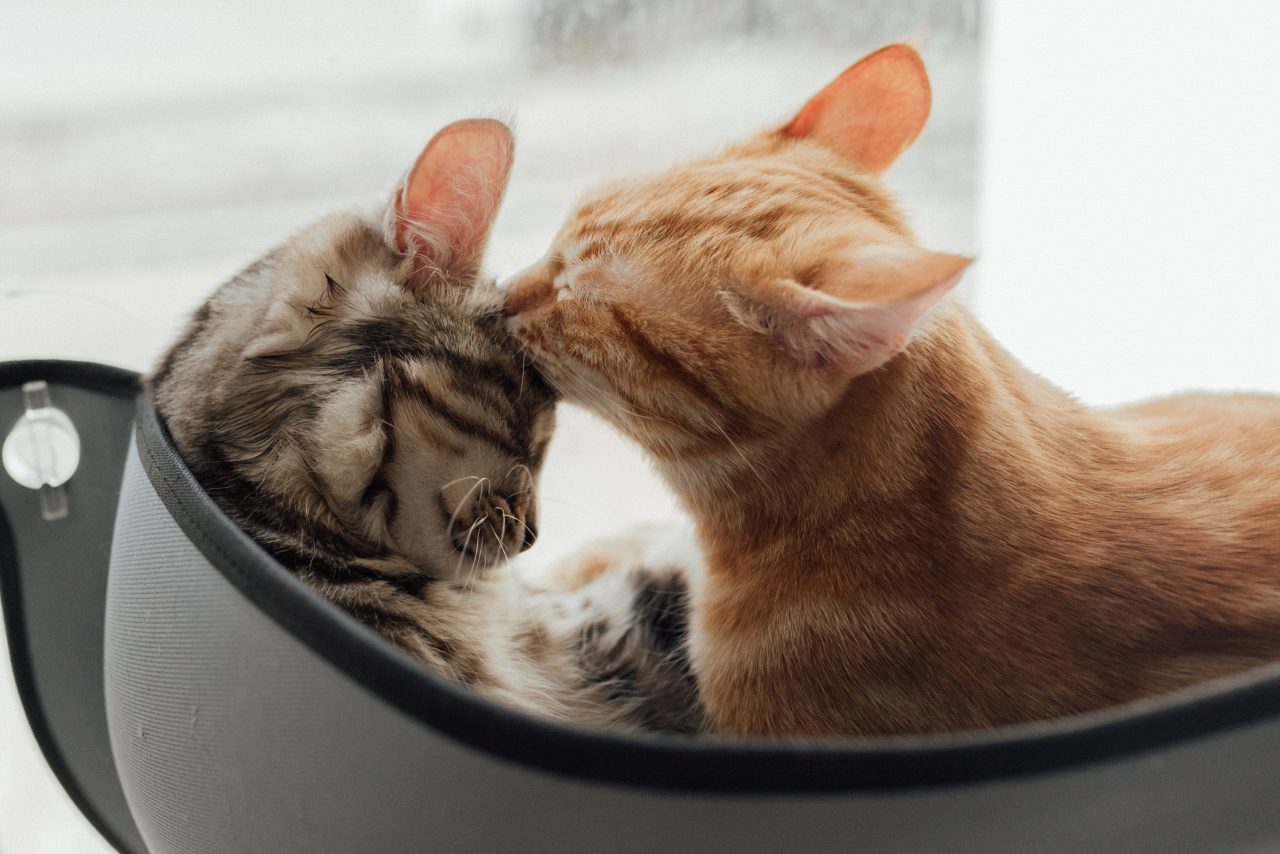
I’m sorry if I’m about to disappoint you, but no, tabby cats are not hypoallergenic. As I’ve previously explained to you, tabby is just a color pattern. It doesn’t have to do anything with whether you’ll be allergic to the cat or not.
The main allergens, when it comes to felines, are their saliva, feces, hair, and dander. None of these are directly connected with the color of their fur or the pattern they have. People who are allergic to cats have problems with proteins that can be found in these particular allergens.
The main culprit is called Fel d 1 and all cat breeds actually produce it. The only reason why some are causing less trouble is that they have lower levels of it in their saliva, feces, or dander.
This being said, it’s easy to conclude that neither cat breed is completely hypoallergenic. Considering the fact that tabby is just a pattern, it’s hard to say how much of this protein will tabbies produce.
You can always check for more information about specific breeds online or at the vet’s station before deciding to adopt or buy a tabby cat. The more information you have, the less likely is that you’ll choose the one you’ll have a severe allergic reaction to.
Do tabby cats shed?
This is not something that you couldn’t guess on your own. However, it’s better to repeat it than to be sorry for not mentioning it. Yes, tabby cats do shed just like every other cat. The amount of hair they lose completely depends on the breed of feline.
If you have a tabby cat, you’ll definitely have issues with regular shedding. Some breeds like Bengal, Siberian, or Siamese won’t shed a lot. Of course, the bald beauty Sphynx won’t leave hairy traces behind.
On the other hand, Maine Coons, Ragdolls, Persians, or Norwegian Forest Cats will shed a lot. When you want to determine on your own whether the cat will lose a lot of its fur or not, you can roughly conclude that long-haired fluffballs will shed more.
You can always ask for a professional opinion before adopting or buying little fluff for yourself. Shedding is not the reason to avoid them completely, and there are some ways in which you can minimize the number of allergens floating around.
We’ll talk about those later, but in case you badly want a tabby feline, here’s how you can figure out whether you’re allergic or not.
How can you know if you’re allergic to tabby cats?

So far, we’ve learned that the protein Fel d 1 is everywhere and that it’s the main trigger for your allergies. But, how can you know if you’re allergic to cats? Maybe that red mark on your skin is a simple rash?
You definitely won’t get the answer overnight, so you need to spend some time with your furry friend to determine what’s happening. The first symptoms that appear are usually a runny nose and sneezing.
Of course, your eyes will get watery and even itchy. After about half an hour, your body will warn you to get away from your tabby cat. You’ll notice a rash on your hands and even hives.
You may start coughing and problems with breathing may develop. Your chest will probably start hurting, and you’ll take shorter breaths than normal. Wheezing will be a sign that your airways are being blocked.
However, if your furbaby was outside or in a basement, pollen or dust may be stuck in her fur coat. So, maybe, you’re not allergic to cats, but rather those two most common allergens.
People who are highly sensitive will react quickly and have a serious allergic reaction almost instantly when they touch a cat. Breathing problems may appear as soon as they enter a house with an indoor feline as well.
You can easily find out what you’re allergic to, and if cats are part of that, by doing a simple skin-prick test. It will show results in the first 20ish minutes. This way, you’ll be sure whether you can adopt a cat or avoid that beautiful furry creature completely.
Can you own a tabby cat if you’re allergic to them?
Shortly, yes, you can own a tabby cat if you don’t have acute reactions. Otherwise, stay away from them, there’s no compromising on that.
There’s an old saying that says where there’s a will, there’s a way and it’s the same with this situation. If you badly want to own a cat, you can. Perhaps you’ll walk around the house with a tissue and constantly have to explain that you weren’t crying, but that’s okay.
Also, some medications can help you to put your allergies under control. It’s not going to be all fun and games, but the majority of the time it will. You’ll be able to enjoy your furbaby’s company and she’ll get some cuddles as well.
I know that you’ll want to spend a lot of time with these adorable creatures! Therefore, as soon as you’re done playing and when both of you had enough snuggling, change your clothes. That way, you’ll minimize the time you’re directly exposed to the allergens.
If you notice that your reaction is getting worse, don’t wait a second before calling your doctor. Some people will strengthen their immune systems while spending time with their feline, for others, it may intensify the symptoms.
How can you reduce the number of allergens?
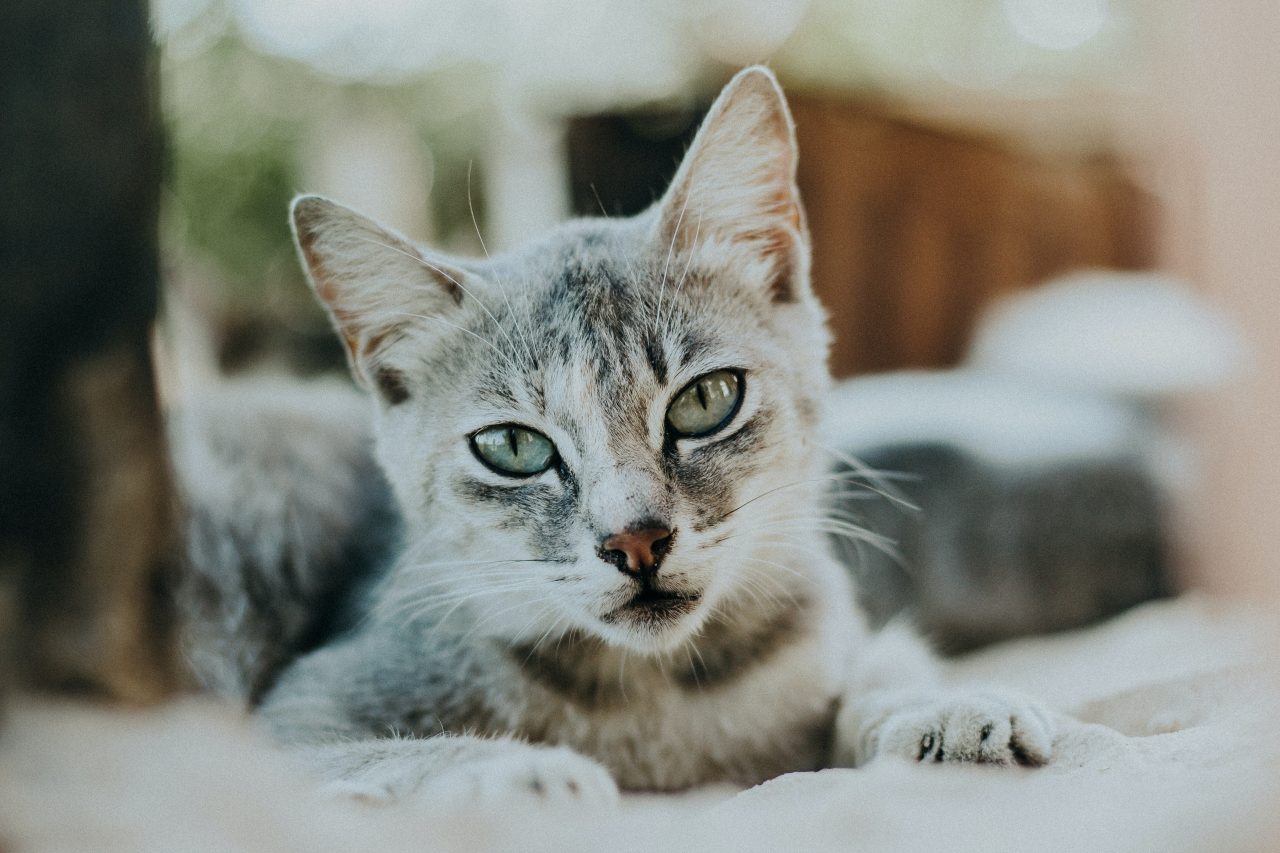
As I’ve previously mentioned, there are a couple of ways to reduce the number of allergens. There’s no magic spell that will make all tabby cats hypoallergenic, but there are some tricks that I’ll gladly share with you.
1. Grooming
I think this is the first thing that I mention when someone says how their kitty is shedding a lot or has problems with hairballs. Luckily enough, this can also help you with reducing the number of allergens in your living space.
You know that cats spend a lot of time during their days sleeping or grooming. The downside of their constant cleaning is spreading allergens all over her body. When she’s licking herself, she’s leaving her saliva on her coat, exposing you to more Fel d 1 protein.
So, in order to help yourself out, you need to give a hand to your kitty. Try to incorporate brushing sessions at least once a week. It will help strengthen your bond and you’ll have the minimum amount of her hair spread around your home.
Depending on her breed, you can brush your furbaby more often, or use those rubber gloves with bumps. Whatever you choose, I’m sure it will be a good decision. If you’re not sure which kind of brush you should use, you can always ask the breeder or vet for help.
2. Cleaning your home often
This is not something new that I invented right now, and you probably knew that if you want to stop your cat’s hair from flying around, you should clean your living space more often. Invest in a very good vacuum cleaner, or opt for cleaning with detergents.
For the latter, make sure that those are pet friendly since your feline will walk around afterward. Try to use some neutral smells, or if you want to prevent her from going into your bedroom, clean it with something that won’t smell pleasantly for her, like lemon, or lavender.
Another thing that can greatly help you with keeping your home allergen-free is an air purifier. This little machine will take in the contaminated air and turn it into one you can safely inhale. Oh, and they can add decorative value to your space as well.
3. Nutrition
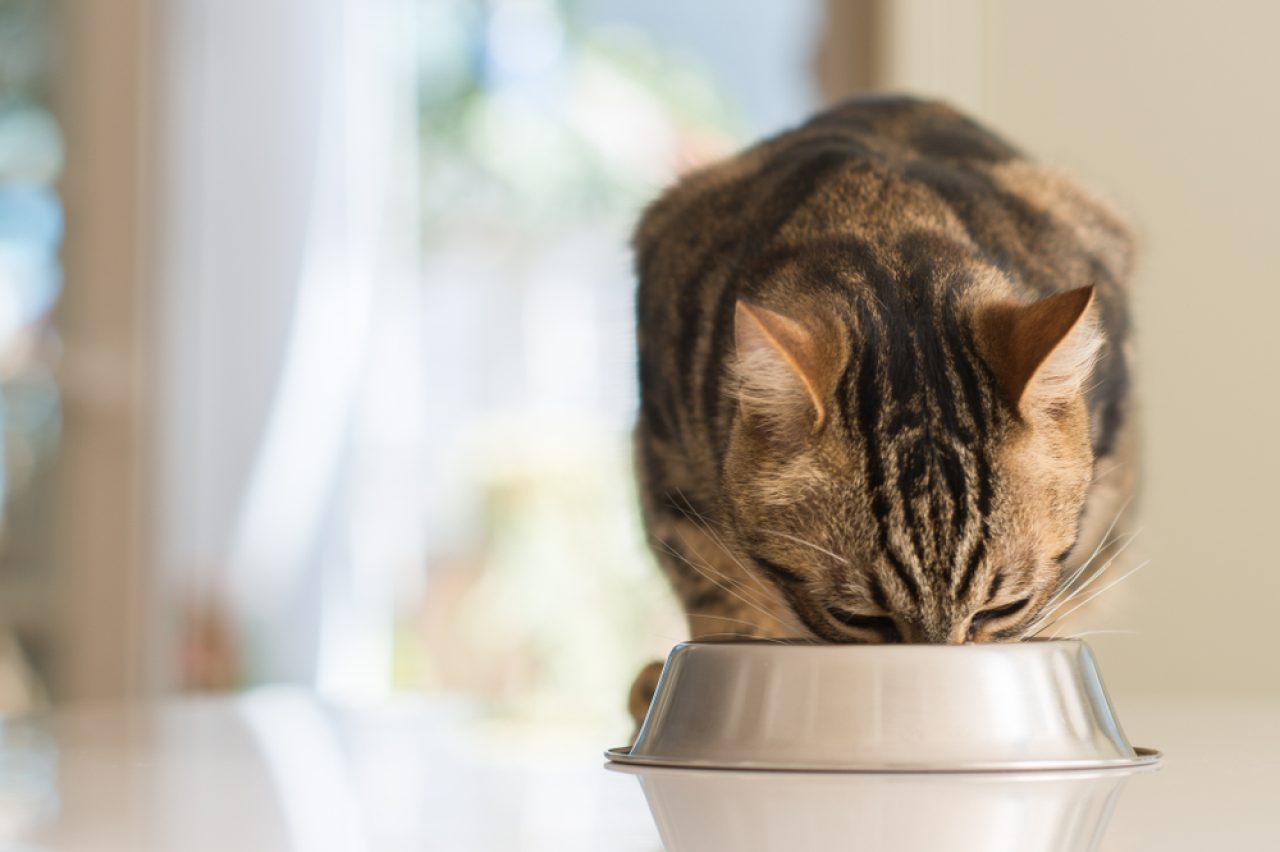
Your cat may shed excessively if her diet is not good enough. In case you’re not serving her high-quality meals, your furbaby may not be as healthy. When her fur is shining and she doesn’t lose a lot of hair (daily shedding is normal), you’ll know that she gets all the important nutrients.
Your feline, regardless of her breed, will need Omega-3 fatty acids to keep her hair follicles strong and her fur shiny. So, give her a lot of fish! If you’re one of those lucky pet owners who can incorporate supplements in your feline’s diet without problems, you can do that as well.
However, before deciding to change something or give her food supplements on your own, ask your vet for advice. And don’t be fooled, tabby cats can’t become hypoallergenic simply by changing the nutritive value of their meals. However, this can help with shedding, therefore slightly reducing the number of allergens as well.
4. Training
This will be easier with those extremely intelligent cat breeds like Maine Coon, Abyssinian, Bengal, and American shorthair. But in general, you can train your kitty to stay away from your bedroom, or another part of the house where you spend the majority of your time.
Some tabby cats can be trained as well (depending on their breed), so use that opportunity and teach them what they should or shouldn’t do. As soon as your fluff learns to use her litter box, things will become a bit easier.
You can always ask someone else to clean it instead of you, and that way, help you with your allergy problems.
5. Baths and wet wipes
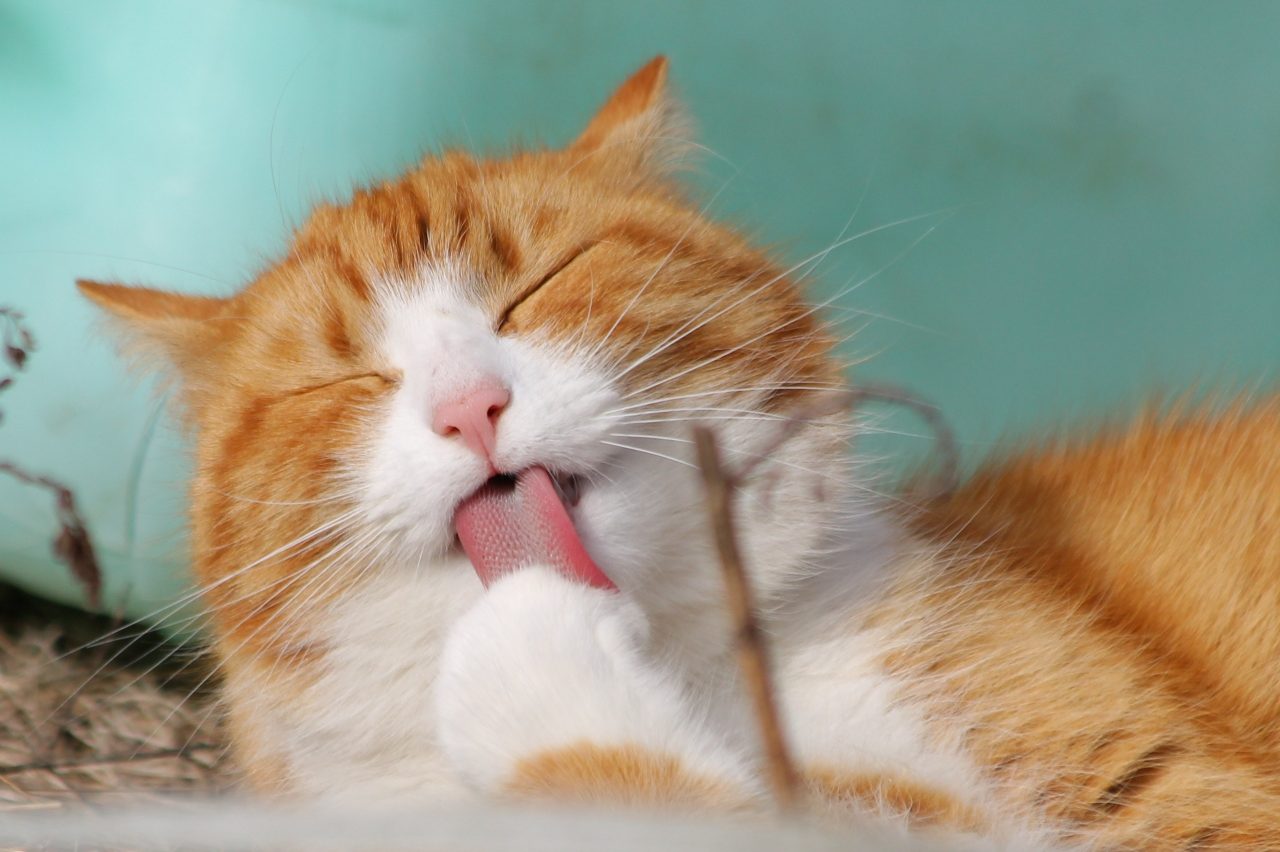
Another thing that’s really important to mention is that you can give your feline an occasional bath. Not all cat breeds enjoy spending time in the water, therefore, some of your tabbies will strongly oppose being under the shower.
Bengals, for example, will jump under the shower because they are extremely curious about the running water, but many domestic cats will try their hardest to avoid the shower.
In that case, you can use wet wipes to clean your furbaby’s coat. Both of these methods will help you remove other potential allergens like pollen or dust that would otherwise irritate you too.
Which cat breeds are hypoallergenic?
Of course, there are some breeds that are more hypoallergenic than others. I have to emphasize one more time that this doesn’t mean that these cats won’t make you sneeze, but rather they’ll produce the minimum amount of allergens.
Since we know that majority of tabby cats aren’t hypoallergenic, it’s time to learn which breeds with this pattern are a bit safer choice. Devon Rex and Cornish Rex won’t shower your living space with their hair because they shed very little. Add our bald beauty, Sphynx, to this list as well.
Javanese, Balinese, Burmese, and Oriental shorthair deserve their space on this list as well. Russian Blue, Bengal, Colorpoint shorthair, Ocicat, and Siberian are no exceptions either. All of these beauties produce the minimum amount of allergens.
However, before you decide to adopt or buy one, I’d advise you to spend some time with them beforehand. Even though they may not be as dangerous for some allergic pet owners, it doesn’t necessarily mean that you won’t react.
I’m sure that, whichever tabby cat you decide to make your family member, especially if it belongs to the group of these hypoallergenic breeds, you won’t make a mistake.
